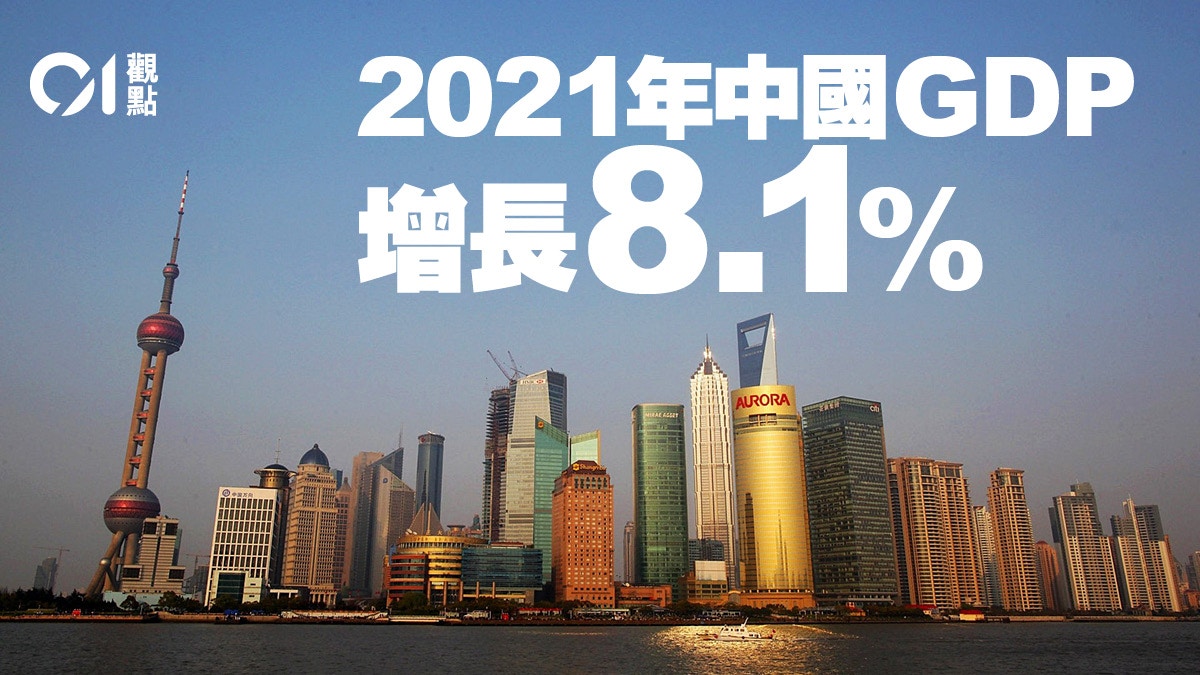2021 has just passed, and the Chinese government released a number of economic data for last year on Monday (17th).
Among them, the most representative GDP data shows that China's annual GDP growth in 2021 will reach 8.1%, completing the "6% target" set by the central government.
Even so, many analysts believe that China's economic development in the coming year will be more difficult.
China's fourth-quarter GDP grew by just 4%, which was better than the median Reuters forecast of 3.6%, but a marked slowdown from previous quarters, indicating downward pressure on economic growth.
Moreover, in 2022, China will still face a host of external and internal unfavorable factors, which will obviously put some pressure on the economy.
Externally, the Sino-US rivalry will continue to suppress China's development; internally, the changing epidemic situation and the prevention and control of the epidemic will inevitably have a certain negative impact on the economy.
The birth population data released on the same day also showed that the number of new births reached a new low of only 10.14 million, which was only slightly higher than the number of deaths. If this is the case, it may become the last year of population growth.
World Bank President David Malpass pointed out that countries may owe enough resources to repay their debts.
(file picture)
Economic growth remains within a reasonable range
Even though some institutions have made extremely pessimistic forecasts for China's economic prospects, the Chinese economy is still solid.
First of all, in terms of data interpretation, since the epidemic has greatly disrupted quarterly GDP growth, care must be taken when interpreting these data.
If you only consider this year's data, the annual GDP growth was as high as 8.1%, and only 4% in the fourth quarter, the growth rate seems to have slowed down suddenly.
But such a big change is largely just because the 2020 epidemic has disrupted the distribution of China's GDP.
If you skip the data for 2020 and directly compare the GDP of 2021 with that of 2019, China’s GDP has grown by an average of about 16% from the second to the fourth quarter, except for the 13.7% increase in the first quarter of the two years.
This shows that China's quarterly GDP growth rate has not changed as much as imagined, but has gradually returned to normal.
Institutions generally predict that China's GDP growth in 2022 will be more than 5%, which is not much different from the data in the past two years (the average annual growth rate in 2020 and 2021 will be 5.9%).
In fact, before the outbreak of the epidemic, China had already sent a signal that its GDP growth rate would slow down, and in terms of economic development, it no longer only focused on seeking GDP data as before, but pursued higher-quality economic development, such as in hard technology. On the solution and the problem of being stuck in the neck by the United States, or the problem that the domestic property market bubble needs a soft landing, etc.
Therefore, even if China's GDP grows by about 5% on average in 2022, it is actually within a reasonable range.
China's GDP has slowed since 2007
More importantly, in addition to being affected by the international economic environment, GDP growth is also a policy effect.
If the Chinese government really aims to pursue the performance of GDP data, it can be regarded as an easy task as long as it increases policy investment.
However, excessive policy investment will produce economic rebound, followed by a cyclical recession after rapid expansion.
The economic growth of the United States has shown this trend, and the economy has experienced four recessions since 1982.
It is impossible for the economy to maintain rapid growth for a long time. China has maintained growth for 44 years since its reform and opening up in 1987. Naturally, it is impossible to maintain high growth forever.
After 2001, China's GDP growth rate increased again due to the effect of joining the WTO, but since 2007, China's GDP has already shown a steady slowdown.
If China's economic slowdown is going to cause problems, it should have already been a problem in the 15 years since 2007.
Obviously, the Chinese policy authorities also believe that stable economic growth expectations are more significant than maintaining extremely high economic growth.
Therefore, when understanding China's economic development, the problem of GDP slowdown should not be exaggerated, and there are more structural problems that are more noteworthy.
For example, whether the population problem is serious and whether population policies such as encouraging births are effective will likely dominate the quality of China's economic development in the future.
Or, whether the level of technology can break through the bottleneck is related to whether China can get out of the middle-income trap.
These are the key points that we should pay attention to when we understand the Chinese economy.
Monetary policy is not enough to deal with the next economic crisis "Longer than the CCP" is just another variation of the collapse theory











